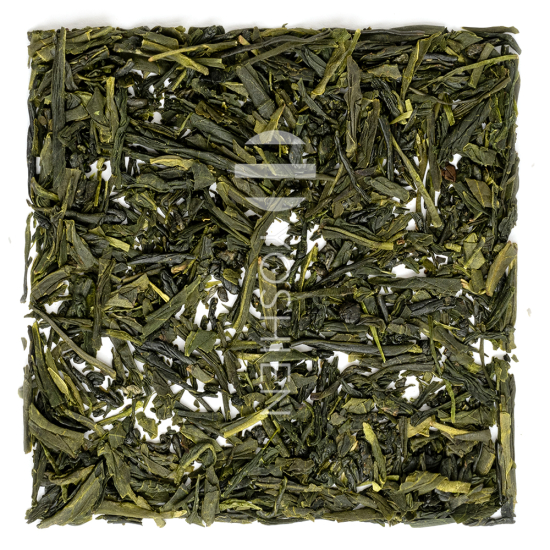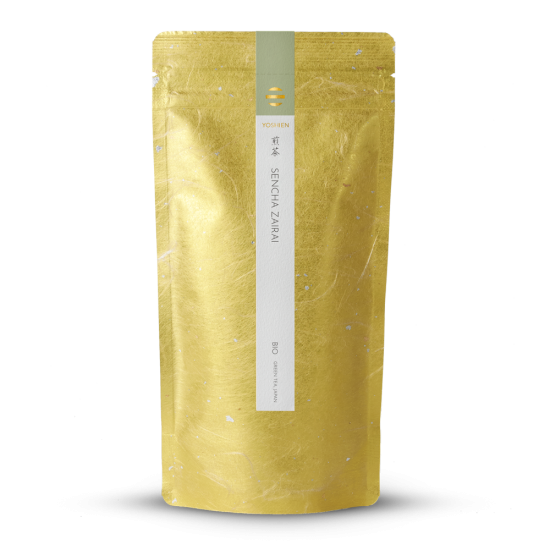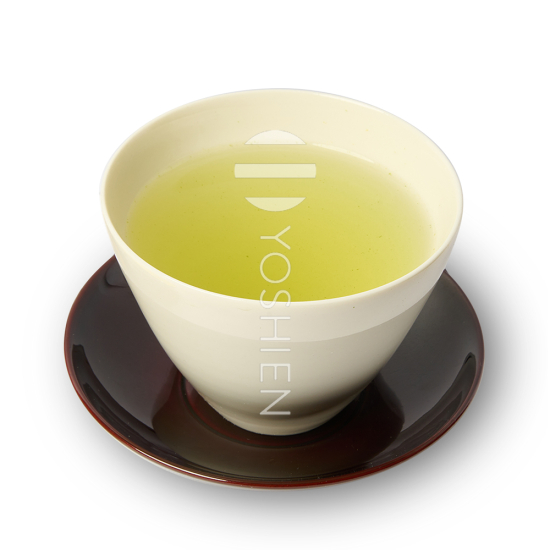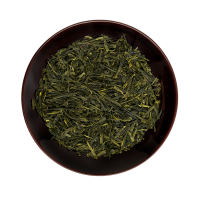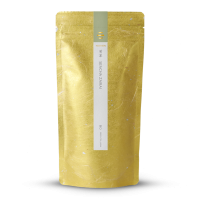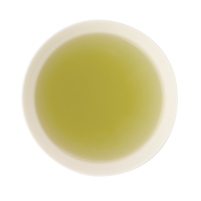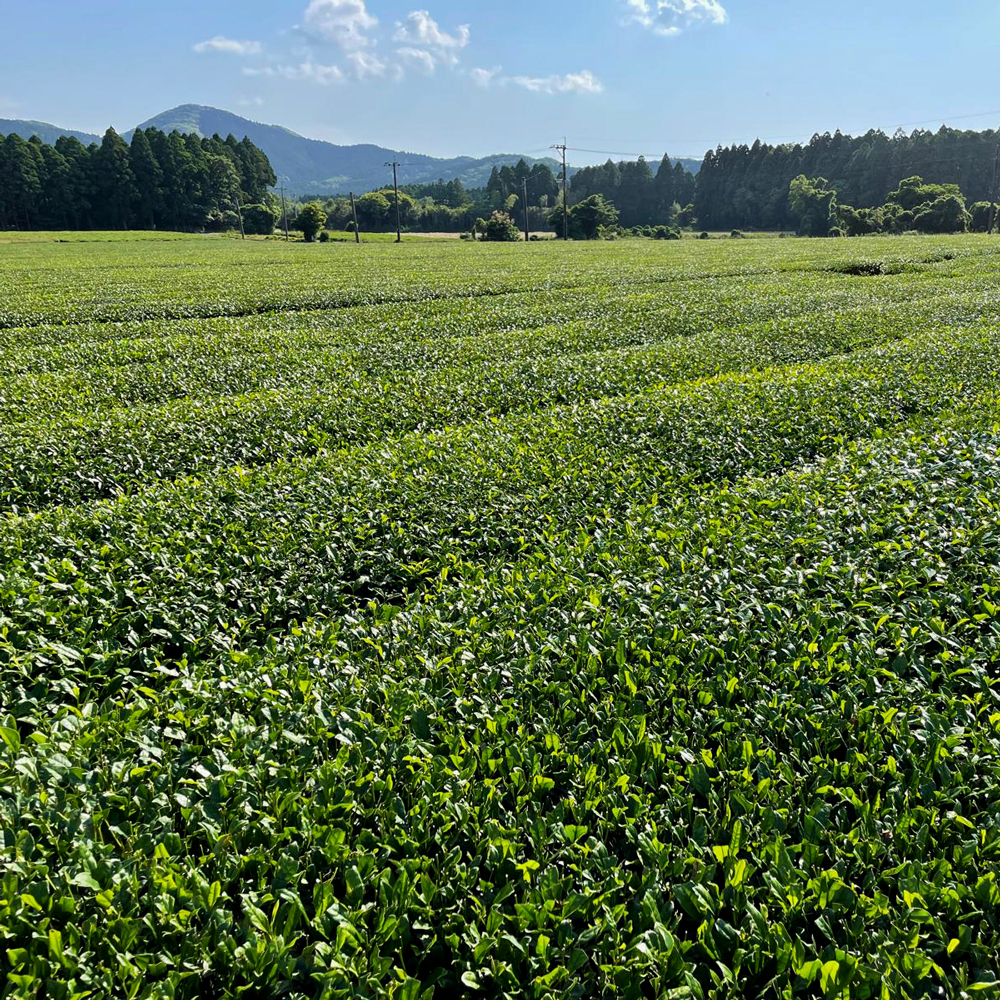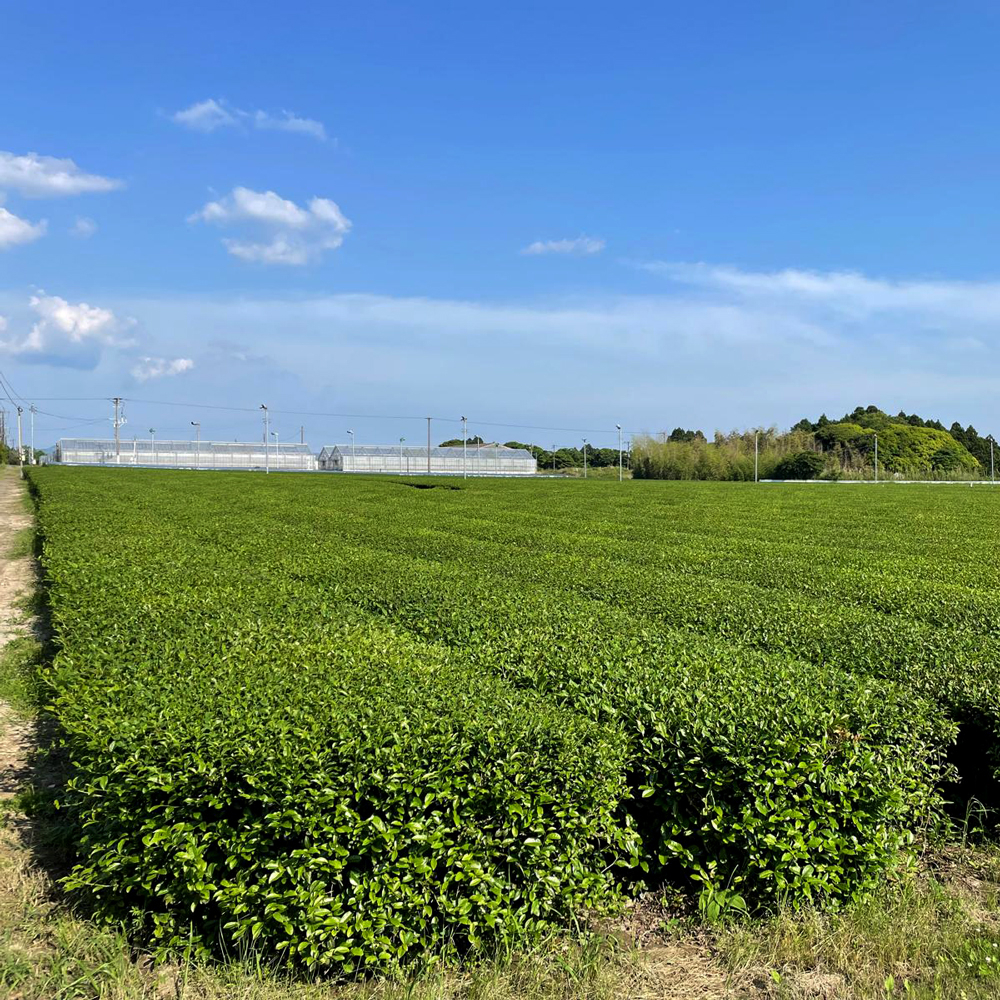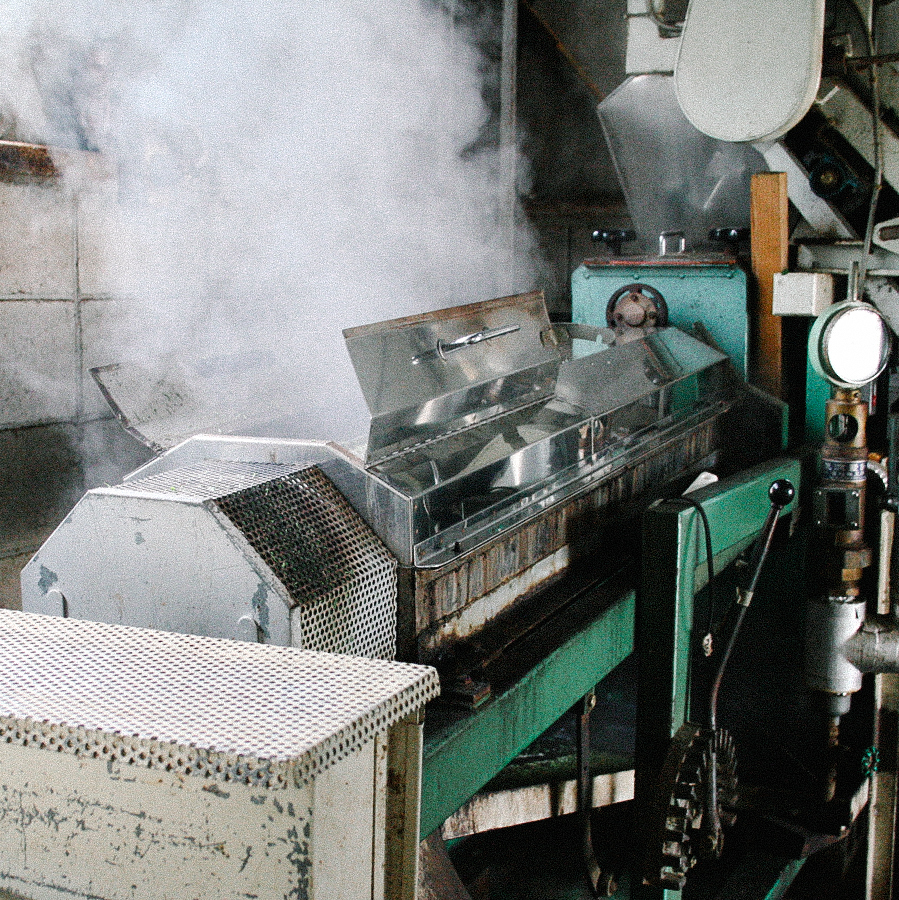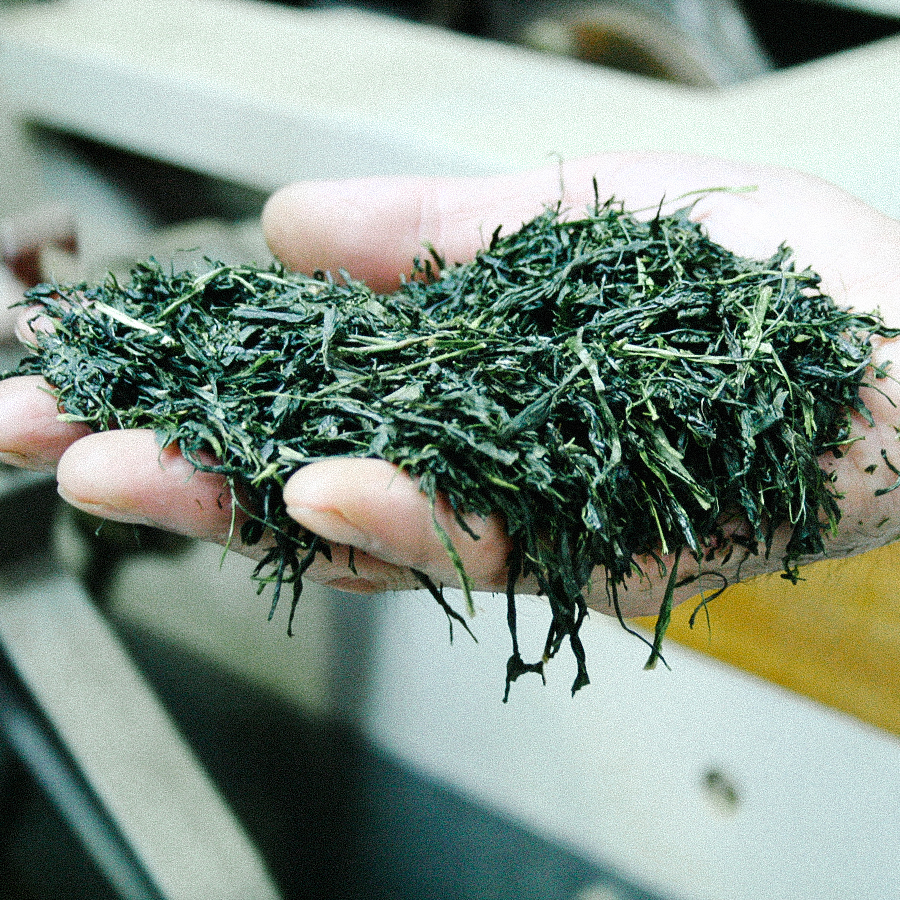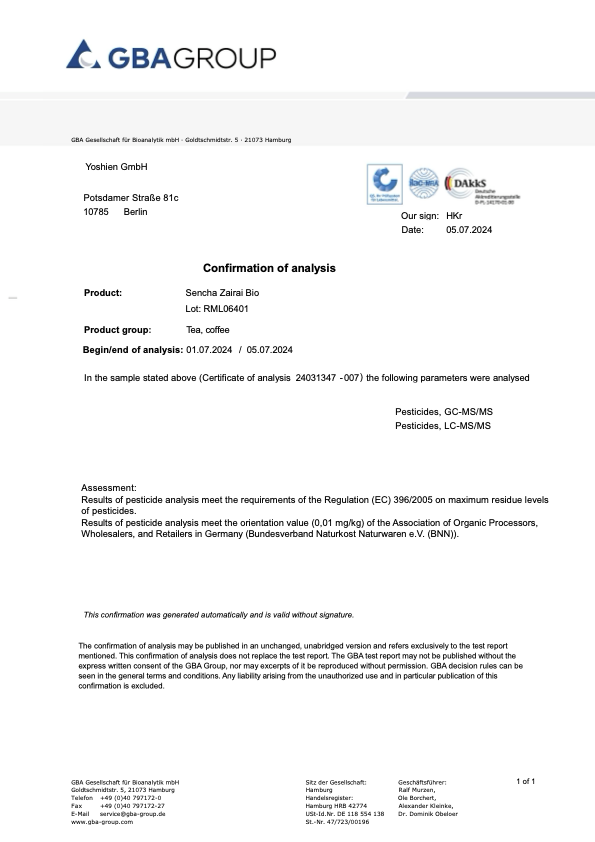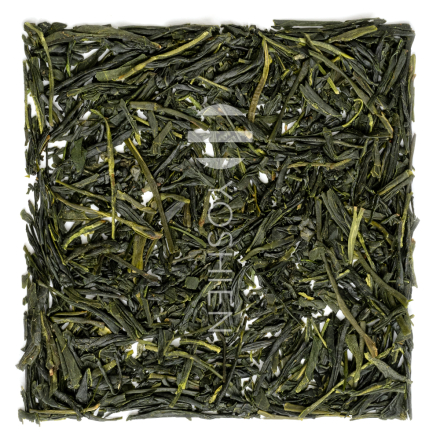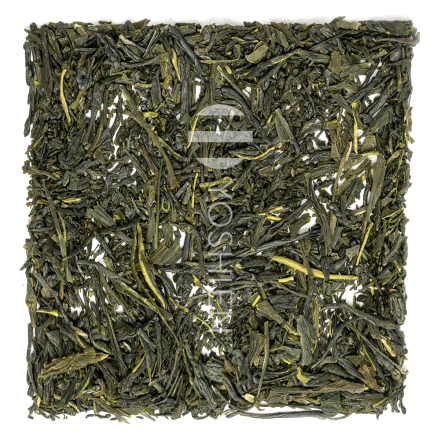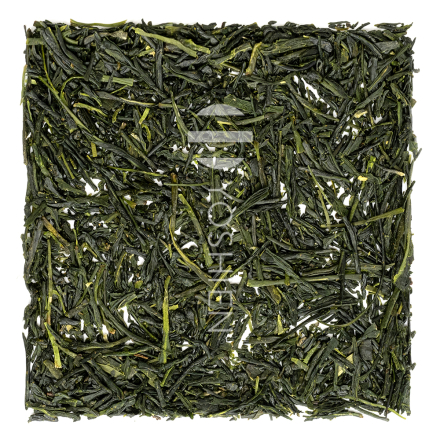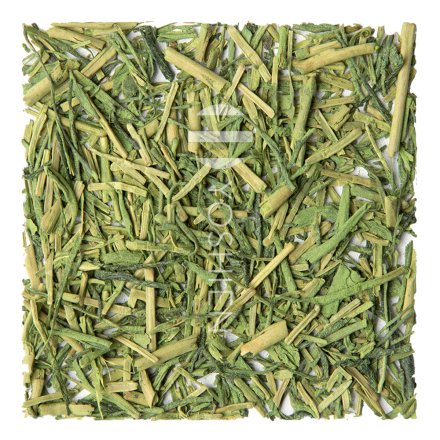Special features in location, cultivation and processing
Alongside Shizuoka, Kagoshima is one of the most important terroirs for Japanese teas in terms of quality and yield. Relatively high temperatures with long hours of sunshine and extensive, mostly flat fields create the best conditions for tea cultivation. Additionally, the proximity to the active Sakurajima volcano, with its ancient plate shifts and regular volcanic ash deposits, creates mineral-rich soil that promotes robust and healthy plant growth. Because of these unique conditions, teas from Kagoshima are vital and strong in flavour, with full aroma.
Zairai Cultivar
Cultivars are typically propagated through cuttings to create tea fields with uniform plant varieties, making cultivation and management more efficient. In contrast, seed-grown tea plants, known as Zairai, result from the genetic blending of two different cultivars through pollination. Tea fields grown from seeds feature plants with diverse genetic makeups, leading to unique nutrient profiles and distinct flavor developments. These plants also exhibit varying resistances to diseases and environmental conditions, requiring more careful attention from tea farmers. However, this additional effort pays off, as the genetic diversity within Zairai fields produces a tea that is truly one of a kind. Each Zairai tea field is unique, embodying the natural terroir influences in the flavor of the final tea like no other.
Organic Certification





